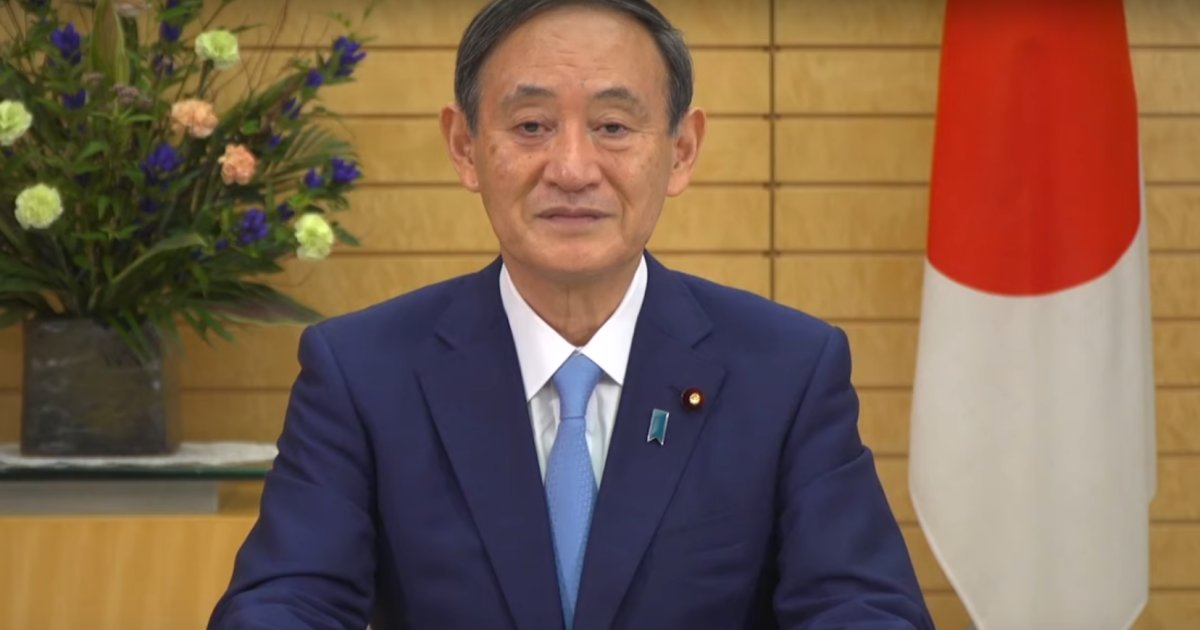Japan’s Prime Minister Yoshihide Suga says his country will become carbon-neutral by 2050 – and this has implications for Australia.
According to CarbonBrief, Japan is the world’s third largest economy and seventh largest emitter of greenhouse gases. The 2011 Fukushima nuclear disaster saw Japan move away from nuclear power to more renewables – but also expand its use of fossil fuels including coal for electricity generation.
Carbon Neutrality = Growth
In his first policy address to parliament since taking over the nation’s top job from Shinzō Abe, Prime Minister Suga said the nation needed to change its mindset.
“Responding to climate change is no longer a constraint on economic growth,” stated the PM. “We need to change our thinking to the view that taking assertive measures against climate change will lead to changes in industrial structure and the economy that will bring about great growth.”
Prime Minister Suga reportedly said the road ahead would see a fundamental change in Japan’s long-term reliance on coal-based energy and while a plan is yet to be developed, the PM indicated it will involve more solar power – and nuclear energy.
The Impact On Australian Coal
According to the Australian Government’s Department of Industry, Science and Energy Resources’ June 2020 Resources and Energy Quarterly, Japan was the third largest importer of Australian thermal coal in 2019 – $9.6 billion worth of the stuff. So, a shift away from the fuel would be another significant nail in Australian thermal coal’s coffin.
Even prior to Prime Minister Suga’s announcement, the writing was on the wall in Japan for the problematic black rock. In July this year, Bloomberg reported Japan may close around 100 inefficient coal-fired power units by 2030 in order to reach its Paris Agreement emissions reduction target.
Investment in new, more efficient coal plants is also looking shaky.
Another Solar Power Opportunity For Australia?
Japan may be a populous country (~126.5 million), but it’s not a big one – 377,915 km². Japan is far smaller than – for example – the Northern Territory, which covers 1.421 million km². While Japan no doubt has a bunch of rooftops that are still bereft of solar panels, the amount of land available for solar farms would be very limited.
Yesterday, we mentioned the proposed Sun Cable project in Australia, which aims to export solar electricity to Singapore via a High Voltage Direct Current (HVDC) submarine cable thousands of kilometres long.
The distance between Darwin and Singapore is around 3,500 kilometres, whereas between Darwin and Kagoshima in Japan’s south it’s around 4,900 kilometres; or to Tokyo, 5,400 kilometres – much greater distances. But perhaps another Sun Cable type project could also supply solar energy via HVDC to Japan? I have no idea whether this is technically or economically feasible – just putting it out there.
Of course, with countries such as China comparatively close by, there may be solar energy import opportunities for Japan much closer to home.


 RSS - Posts
RSS - Posts



A HVDC link from Japan to South Korea would be a logical first step. There has been talk of linking up Thailand, Vietnam, Laos, and China. Little has come of China’s Belt & Road initiatives since they only funded the hot air component, but if it goes ahead and Sun Cable is completed, then a tenuous link between Australia and Japan would be relatively easy to complete. But if Sun Cable is viewed as a big success more direct links may be created. It’s all very iffy though. Money spent on cables is money that could instead be spent on national solar & storage.
The post begins with:
“Japan’s Prime Minister Yoshihide Suga says his country will become carbon-neutral by 2050…”
It’s a step in the right direction by a major GHG emissions country but the latest climate science says it’s still TOO LATE.
See my comment at: https://www.solarquotes.com.au/blog/councils-sustainable-recovery-mb1731/#comment-842102
A scientific article published on Oct 6 in Nature Communication titled “Temperature variability implies greater economic damages from climate change”, suggests a worst-case climate scenario around the $500 trillion mark in damages, and a best case scenario around $30 trillion. However, the article ends with a key caveat:
“An important challenge in the years to come will be to pin down how damages accumulate during longer periods of extreme climate, so that these effects can be incorporated into future assessments of the economic damages from climate change.”
See: https://www.nature.com/articles/s41467-020-18797-8/
Climate scientist Peter Kalmus at NASA’s Jet Propulsion Lab says:
“…”net-zero by 2050″ is disastrous and tantamount to climate denial.”
See: https://twitter.com/ClimateHuman/status/1320094332649533440
The post includes:
“According to the Australian Government’s Department of Industry, Science and Energy Resources’ June 2020 Resources and Energy Quarterly, Japan was the third largest importer of Australian thermal coal in 2019 – $9.6 billion worth of the stuff.”
The latest data I see indicates Japan is the largest importer of Australian thermal coal in 2019 – NOT “third largest importer”.
The more recent “Resources and Energy Quarterly September 2020”, on page 51, provides a 2019 breakdown of the top five countries that were importing Australian thermal coal:
1. Japan: _ _ _ _ $9.6 billion
2. China: _ _ _ _ $4.0 billion
3. South Korea: _$3.3 billion
4. Taiwan: _ _ _ _$2.8 billion
5. India: _ _ _ _ _ $0.3 billion
Rest of World: _ _$2.6 billion
China is the world’s largest thermal coal importer (20% global share), followed by India (17%), then Japan (13%), then South Korea (8%), then Taiwan (5%).
Indonesia is the world’s largest thermal coal exporter (41% global share), then Australia (20%), then Russia (17%), then South Africa (7%), then Colombia (6%).
See: https://publications.industry.gov.au/publications/resourcesandenergyquarterlyseptember2020/documents/Resources-and-Energy-Quarterly-Sept-2020.pdf
It seems to me Australia’s major thermal coal markets are disappearing.
See my comment: https://www.solarquotes.com.au/blog/mcmahon-sun-cable-mb1734/#comment-846678
Where’s Australia’s transition plan? Scomo? Gladys? Annastacia?